
Frontiers in Built Environment
Scope & Guideline
Unlocking insights for sustainable urban development.
Introduction
Aims and Scopes
- Sustainable Construction Practices:
Research on eco-friendly materials, energy-efficient designs, and innovative construction techniques aimed at reducing the environmental impact of buildings. - Urban Resilience and Adaptation:
Studies that explore strategies for urban areas to adapt to climate change, natural disasters, and other environmental challenges. - Smart Technologies and Digitalization:
Investigations into the integration of digital technologies, such as IoT, AI, and BIM, in enhancing building performance, safety, and management. - Health and Wellbeing in Built Environments:
Exploration of how architectural and urban design affects the physical and mental wellbeing of occupants, including studies on indoor air quality and biophilic design. - Structural Engineering Innovations:
Research focusing on advanced materials and structural systems that improve the safety, durability, and resilience of buildings and infrastructure. - Behavioral and Social Aspects of Urban Living:
Examination of how built environments influence social interactions, mobility patterns, and community engagement.
Trending and Emerging
- Circular Economy in Construction:
There is a growing emphasis on sustainable practices that promote the reuse and recycling of materials within construction processes, highlighting the importance of resource efficiency. - Resilience and Disaster Preparedness:
Research focusing on enhancing the resilience of urban infrastructures to withstand natural disasters and climate change impacts is gaining prominence. - Integration of AI and Machine Learning:
The application of AI and machine learning technologies for predictive modeling, structural health monitoring, and optimization in construction is increasingly prevalent. - Health-Centric Design Approaches:
A rising trend in research is centered on designing spaces that promote health and wellbeing, reflecting an increased awareness of the psychological and physiological impacts of the built environment. - Smart Urban Mobility Solutions:
Innovative studies on enhancing urban mobility through technology and infrastructure improvements are becoming more common, addressing the challenges of urban transportation. - Energy Efficiency and Building Performance:
A significant focus on optimizing energy use in buildings through advanced materials, design strategies, and building management systems is emerging.
Declining or Waning
- Traditional Construction Methods:
There is a noticeable decrease in research focused on conventional construction techniques, as the emphasis has shifted towards modern, sustainable alternatives. - Non-Technical Aspects of Urban Planning:
Topics such as purely socioeconomic studies or non-engineering aspects of urban planning have seen reduced publication frequency, suggesting a stronger inclination towards technical and engineering solutions. - Historic Preservation Techniques:
Research related to preservation methods for historic buildings is becoming less frequent, possibly due to a greater focus on new construction and sustainability. - Basic Environmental Impact Assessments:
Simplistic assessments of environmental impact are declining, with a shift towards more comprehensive, integrative assessments that consider a wider range of factors. - Conventional Safety Protocols in Construction:
The focus on traditional safety measures in construction sites appears to be waning, as innovative safety technologies and practices gain more attention.
Similar Journals

Buildings
Exploring the Future of Architecture and EngineeringBuildings is a premier peer-reviewed journal published by MDPI, focusing on the multidisciplinary aspects of architectural and civil engineering. Established in 2011, this Open Access journal has quickly gained recognition in the academic community and is currently classified in the Q1 category for Architecture and Q2 for Building and Construction, as well as Civil and Structural Engineering, reflecting its significant impact within these fields. With Scopus rankings placing it in the top tier of architecture and construction disciplines, Buildings provides a platform for innovative research and practical applications that push the boundaries of knowledge in building design, sustainability, and infrastructure development. The journal, based in Switzerland and intended for an international audience, welcomes various types of content including research articles, reviews, and case studies, ensuring a comprehensive resource for researchers, professionals, and students alike.

Gradevinar
Advancing Civil Engineering Knowledge, Open to AllGradevinar, published by the Croatian Society of Civil Engineers-HSGI, is a leading Open Access journal in the field of Civil and Structural Engineering, with a significant history that dates back to its inception in 1980. This journal, with the ISSN 0350-2465 and E-ISSN 1333-9095, has established itself as a vital platform for disseminating innovative research and practical developments in civil engineering, particularly since it became Open Access in 2000, facilitating unrestricted access to its wealth of knowledge. As of 2023, Gradevinar is ranked in the third quartile (Q3) of Scopus’s Civil and Structural Engineering category, demonstrating its growing influence and relevance in the academic community, with a current ranking of #255 out of 379 journals in the field. Researchers, professionals, and students benefit from this journal's commitment to high-quality content that reflects the latest advancements and best practices in civil engineering, contributing to both technical proficiency and sustainable development in infrastructure projects across Croatia and beyond.
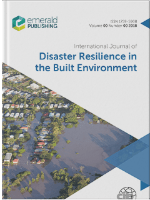
International Journal of Disaster Resilience in the Built Environment
Advancing resilience in every structure.International Journal of Disaster Resilience in the Built Environment is a leading peer-reviewed journal published by Emerald Group Publishing Ltd, focusing on the crucial intersection of disaster resilience and the built environment. Established in 2010, this journal serves as an essential platform for researchers, professionals, and students engaged in the fields of Building and Construction, as well as Safety, Risk, Reliability and Quality, maintaining a respectable Q3 ranking in both categories as of 2023. With a commitment to enhancing global knowledge on resilient construction practices, the journal examines innovative strategies to mitigate risk and enhance safety in built structures. Despite its robust academic reputation, it currently operates without an open access model, emphasizing its curated approach to high-quality scholarship. The publication aims to foster interdisciplinary collaboration and advance the development of sustainable practices within the context of disaster risk reduction, making it a vital resource for anyone dedicated to improving resilience in the built environment.

PROCEEDINGS OF THE INSTITUTION OF CIVIL ENGINEERS-MUNICIPAL ENGINEER
Advancing Knowledge for Resilient Urban DevelopmentPROCEEDINGS OF THE INSTITUTION OF CIVIL ENGINEERS-MUNICIPAL ENGINEER is a prestigious journal dedicated to advancing the field of civil and structural engineering, specifically within the municipal context. Published by Emerald Group Publishing Ltd, this journal has established itself as a key resource for engineers, researchers, and educators seeking to explore innovative practices and emerging trends in urban infrastructure and public works. With a Scopus Rank of 160 out of 379, placing it in the 57th percentile and categorized in Q3 for 2023, it reflects its relevance and contribution to the scholarly community. The journal publishes high-quality research findings that aim to address the complex challenges faced in municipal engineering, making it an invaluable asset for those looking to inform their practices with cutting-edge knowledge. Although it offers traditional access options, the importance of its contributions to engineering solutions makes the journal an essential read for anyone involved in the design, construction, and management of municipal projects. Authors are encouraged to submit their work and contribute to shaping the future of civil engineering through this well-regarded publication, which has been converging expertise since 1992.
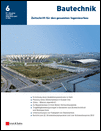
Bautechnik
Shaping the future of architecture and engineering excellence.Bautechnik is a premier academic journal in the fields of Building and Construction and Civil and Structural Engineering, published by ERNST & SOHN in Germany. With a history dating back to 1969 and a significant converged timeline through various years, this journal offers a rich repository of peer-reviewed research dedicated to advancing the principles, methodologies, and innovations within its domains. Bautechnik is currently ranked in the Q3 category for both building and construction, as well as civil and structural engineering, indicating its relevance and contribution to the academic community. Though it does not offer open access, its curated content is accessible to a global audience of researchers, professionals, and students striving for excellence in their fields. The journal aims to foster discussions and disseminate knowledge that impacts the future of construction, architecture, and engineering practices.
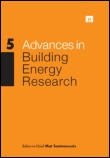
Advances in Building Energy Research
Elevating Energy Efficiency through Scholarly ExplorationAdvances in Building Energy Research is a pivotal journal dedicated to the scholarly exploration of energy efficiency and sustainable practices within the building and construction sector. Published by Taylor & Francis Ltd from the United Kingdom, this journal provides a rich platform for researchers, industry professionals, and students interested in the latest advancements and methodologies that drive energy conservation in architecture and engineering. With an impressive 2023 Scopus ranking of #64 out of 223 in the Building and Construction category and a notable Q2 category quartile, the journal occupies a significant position in its field, emphasizing high-quality, peer-reviewed research that meets the needs of a global audience. Though it operates under a subscription model, its contributions are invaluable for advancing knowledge that addresses the urgent challenges of energy consumption and sustainability in built environments. Spanning research published from 2007 to 2024, this journal continues to be an essential resource for those seeking innovative solutions and insights into building energy performance.
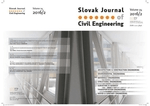
Slovak Journal of Civil Engineering
Fostering collaboration for a sustainable engineering future.Welcome to the Slovak Journal of Civil Engineering, a premier open-access publication dedicated to advancing the field of civil engineering. Published by SCIENDO, this journal has been providing a platform for the dissemination of groundbreaking research since 2010, ensuring that all articles are freely accessible to a global audience. With a commitment to promoting innovation and excellence within civil engineering, the journal covers a wide range of topics, including structural engineering, transportation systems, geotechnics, and environmental engineering. The Slovak Journal of Civil Engineering is designed to engage a diverse community of researchers, professionals, and students, fostering collaboration and knowledge-sharing to address contemporary challenges in the field. With its open-access model, the journal not only enhances visibility for authors but also ensures that the latest findings and methodologies reach practitioners and academics alike, making it an essential resource for anyone interested in civil engineering advancements. Stay connected with the evolving landscape of civil engineering through this influential publication.

Architecture Civil Engineering Environment
Pioneering Research at the Intersection of Design and SustainabilityArchitecture Civil Engineering Environment, published by Silesian University of Technology, is an esteemed open-access journal dedicated to advancing research and scholarship in the fields of architecture, civil engineering, and environmental science. With its ISSN 1899-0142 and E-ISSN 2720-6947, the journal facilitates the dissemination of innovative practices and methodologies to an international audience. Since transitioning to open access in 2016, it has fostered a collaborative environment that empowers researchers and professionals to share their work freely, thus enhancing the visibility and impact of contemporary studies. The journal emphasizes interdisciplinary research, aiming to bridge gaps between architectural design, civil infrastructure development, and environmental sustainability. By publishing high-quality peer-reviewed articles, Architecture Civil Engineering Environment plays a crucial role in shaping the future of sustainable practices within these intertwined disciplines, making it an essential resource for scholars, practitioners, and students alike.
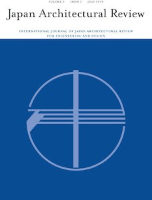
Japan Architectural Review
Fostering collaboration for innovative architectural solutions.Japan Architectural Review is a premier open-access journal published by WILEY, dedicated to advancing the fields of architecture, environmental engineering, and modeling and simulation. Since its inception, this journal has emerged as a critical platform for disseminating innovative research, offering insights into the latest trends and challenges facing the built environment and sustainability practices. With an impact factor reflecting its growing influence, especially in the Q2 category of Architecture and notable rankings in environmental engineering and modeling disciplines, it serves as an essential resource for researchers, professionals, and students alike. The journal's commitment to open access since 2018 has further enhanced its reach, making high-quality research accessible to a global audience. Spanning an important timeline from 2019 to 2024, the Japan Architectural Review facilitates a collaborative discourse among scholars, encouraging innovative solutions to contemporary architectural challenges.

Smart and Sustainable Built Environment
Exploring the intersection of sustainability and architecture.Smart and Sustainable Built Environment, published by Emerald Group Publishing Ltd, is a prestigious journal dedicated to advancing the knowledge and practice of sustainable development within the landscape of modern architecture, building, and civil engineering. With an impact factor that reflects its strong influence and standing—illustrated by its consistent categorization in the Q1 tier across several relevant fields including Architecture, Building and Construction, and Urban Studies—this journal has become an essential resource for researchers, practitioners, and policymakers alike. Operating in the vibrant academic backdrop of the United Kingdom, it aims to publish cutting-edge research that addresses critical issues at the intersection of sustainability and built environments. The journal is also indexed in Scopus with impressive rankings, ensuring visibility and credibility. The scope of the journal encompasses a broad array of topics, encouraging contributions that discuss innovative practices, policies, and technologies to foster smart and sustainable development. With its dedication to publishing high-quality research from 2012 to 2024, Smart and Sustainable Built Environment is at the forefront of fostering dialogue and collaboration in the pursuit of sustainable solutions for our built environment.